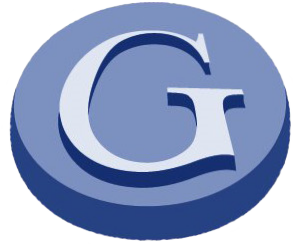We’ve already covered how to use the process when managing individuals, now let’s talk about how you can leverage it with your whole team. The outline approach below usually yields three key benefits.
Firstly, it helps to identify clearly what each individual needs to do to move the team goals forward. Secondly, it helps everyone to share their insights and experience and learn from each other. Finally, it can have a massive impact on the prospects that your team will deliver the results.
At your next team meeting…
- Vision and Strategy. Outline your vision, goals and overall strategy so everyone hears the same thing. Depending on your progress so far, you may need to open it out for debate, consult and build consensus and buy-in.
- Influencing Goals. Now move the meeting to influence. “If this is what we are aiming for, what have we got to influence?” Read more. Let the discussion run and then start to close it down to a couple of priority goals to work on. You may also need to spend a little time refining the wording of the goal and the evidence criteria.
- Identify Stakeholders. Open this step with, “Now we’re clear what we have to influence, who can help or hinder our progress?” Focus only on the number one priority goal — do others at the next meeting. This step often starts with groups (such as Finance or Distribution). Later you will need to break it down into individuals.
- Map the Stakeholders. Use a table to create the Influence Map, perhaps using masking tape to divide up the quadrants .Label the quadrants, and then ask someone to talk the rest of the team through their views on where a particular stakeholder should be positioned. Blank index cards are ideal for this step. Do one stakeholder at a time and encourage discussion as you go to challenge the positioning.
- Prioritise Targets. Get the team to discuss the priorities for movement on the map. Who are the people who, if moved, would have the greatest positive effect on goal achievement?
- Split Groups. If your previous discussions have been at a group level, now you have identified the priority group to move, clear the table and consider the individuals who have the most power, impact or potential to help or hinder from within that group. Laying these out on the map, still keeping focused on your goal, should help your team to start discovering the actions.
- Finalise the Action. Who is going to do what? Because you are a team, different members may be more or less suitable to take responsibility for engaging with a given stakeholder. Maybe combining forces will be the answer. Get the team to decide the actions, responsibilities and, most importantly, agree the deadlines.
- Agree Next Review. Don’t leave it to chance, book the review straight away.
Okay, this is just the brief outline. Those familiar with the process outlined in Influential Leadership will easily be able to expand and adapt to suit their particular situation. I regularly use this process on team workshops while working closely with the team leader. The interesting thing we usually notice is that the team doesn’t even notice the learning they are doing — it feels more like a work planning session than training!
Example
Of the many, the one example that really stands out was working with a board of directors for a large logistics company. They were facing significant operational and commercial challenges, and the Managing Director wanted to bring the team together to learn how to influence all the staff to go the extra mile and achieve the ambitious targets.
The business goals for the next year included establishing a new depot to handle 25% of products, replacing the stock management system and another four ambitious targets. Each one of these, on their own, would be tough — but aiming to do all within nine months was a stretch.
We started off identifying stakeholders as groups. These included a variety of suppliers and customers. Added to this were employees, unions, shareholders and a few others besides. With turnover of over £1bn, this was complex setting.
Things got really interesting when we were around the table discussing the stakeholder positions. It quickly became apparent that the priority was the poor relationship with the union and a key supplier. The union could potentially prevent or delay most of what they were trying to do. And the relationship was adversarial, at best. On the other hand, the supplier of the software system was already starting to prove difficult, yet had the power to force up the cost due to heavy reliance on their expertise. This was seen as a key risk, if not to the delivery, certainly to the profit line!
The ensuing debates were quite intense and lengthy, but in the end a clear strategy emerged. Actions were agreed and everyone committed to the chosen plan. Six months later, all targets had been met and the relationship with the union was described by the Group HR Director as “very positive”.
In reality, we just provided a simple structure for their discussions, provocative questions and challenge, and a fair degree of strong facilitation (due to their level). Result — they achieved the influence they set out to achieve. Job done.
